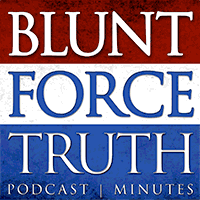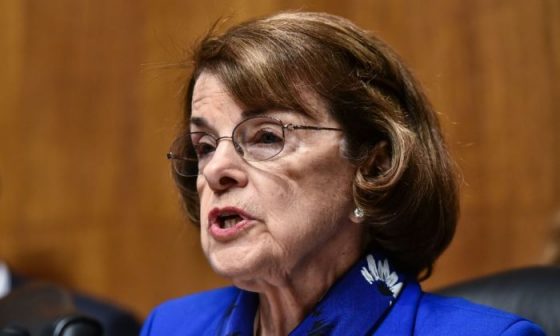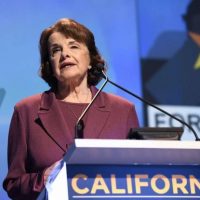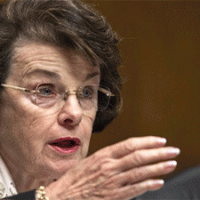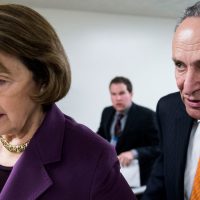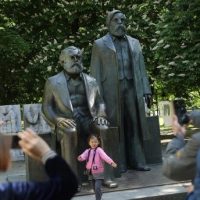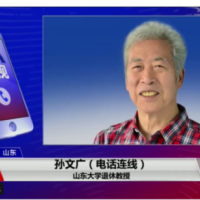News Analysis
Last week’s revelations that a Chinese spy served on the staff of Sen. Dianne Feinstein (D-CA) for almost 20 years, should be shocking no one.
The unidentified agent, who was in place as recently as five years ago, was Feinstein’s driver. He also served as a “gofer” in her Bay Area office and a “liaison to the Asian-American community.” He sometimes attended functions at the Chinese consulate, as a stand-in for the senator.
At the time the spy was discovered by the FBI, Feinstein was chairwoman of the Senate intelligence committee. Feinstein says she forced the agent into retirement, but no other staff members were informed of the circumstances behind his exit and no charges were filed.
Feinstein had been warned two decades ago that she might be targeted by Chinese intelligence.
The senator issued a statement on March 10, 1997, that the FBI had warned her and five other senators that the Chinese government might try to “funnel illegal contributions to her campaign and other Congressional campaigns, but she said the information had not influenced her position or her vote on any issue,” according to The New York Times.
“[Feinstein] said that while ‘the information was vague and nonspecific,’ she had concluded that she should ‘be very cautious’ in dealing with Asian-American contributors,” the New York Times report stated.
Feinstein would obviously be of interest to Chinese intelligence for the classified information she might possess through her position on the intelligence committee.
She might also be the target of “influence operations” — a subtler approach, by which Chinese operatives would try to steer Feinstein into promoting policies that might benefit the Chinese regime.
According to the article, “For many years, Ms. Feinstein has tried to promote friendship and trade with China, and she has countered critics of the Chinese human-rights record by emphasizing what she described in a Senate speech last year as ‘major improvements in human rights’ there.”
Conciliatory to Communists
Feinstein’s conciliatory approach to communist governments began in the mid-1950s when she served in the Stanford University student government.
Before her senior year, Dianne Goldman, as she was then known, traveled to Europe on a student trip led by Stanford political science professor, James T. Watkins. The agenda included a possible meeting with Yugoslav communist revolutionary Marshal Josip Broz Tito.
In January 1955, a vigorous debate erupted on the Stanford student executive committee, over whether to support a proposed visit of seven Soviet journalists to the United States.
According to Stanford Daily reports at the time, executive member Sam Palmer asserted that “nothing can be lost in allowing them to come over.”
He was supported by both Goldman and Don Peck, who claimed that it was important to show “Russia that the United States is not an Iron Curtain country — that we are willing to let Communists enter.”
The ayes won and Goldman went on to personally host the delegation from the Soviet Writers Union when they toured Stanford’s campus later that year.
Thirty years later, while serving as mayor of San Francisco, Feinstein issued an official city proclamation in support of that year’s World Festival of Youth and Students held in Moscow.
This international propaganda event was organized by the Soviet-controlled World Federation of Democratic Youth and was supported in the United States by the Communist Party USA and similar groups.
Feinstein traveled to Moscow in December of that year as part of a trade delegation of 450 U.S. businessmen and public officials.
A little over a year later, on Jan. 27, 1987, Soviet Consul General Valentin Kamenev presented Feinstein with a Soviet streetcar: “A streetcar named desire.” Also present at the ceremony was Viktor Zhelezny, deputy chief of public transport for the Russian Republic.
Bridges to Communist China
Building bridges to the People’s Republic of China, however, seems to have been an even higher priority for Feinstein.
One of Feinstein’s first acts on becoming mayor of San Francisco in January 1979, was to visit Shanghai to establish sister-city relations.
The next apparent priority was re-establishing passenger airline service between China and the United States. Service was restored on Jan. 8, 1981, after a “32-year hiatus when a Boeing 747 with 139 Chinese passengers arrived exactly on time at San Francisco International Airport,” according to The New York Times.
Feinstein and Chinese Consul General Hu Ding-yi held a ribbon-cutting ceremony, “which included a cake, decorated with ‘CAAC [Civil Aviation Administration of China] Welcome to San Francisco,’ and two bottles of champagne.” Feinstein described the landing as “a historic and exciting occasion.”
Feinstein went on to visit Shanghai several times in her official capacity and built a close personal relationship with then-Mayor Jiang Zemin.
Read the full story from NoisyRoom.net
Want more BFT? Leave us a voicemail on our page or follow us on Twitter @BFT_Podcast and Facebook @BluntForceTruthPodcast. We want to hear from you! There’s no better place to get the #BluntForceTruth.
